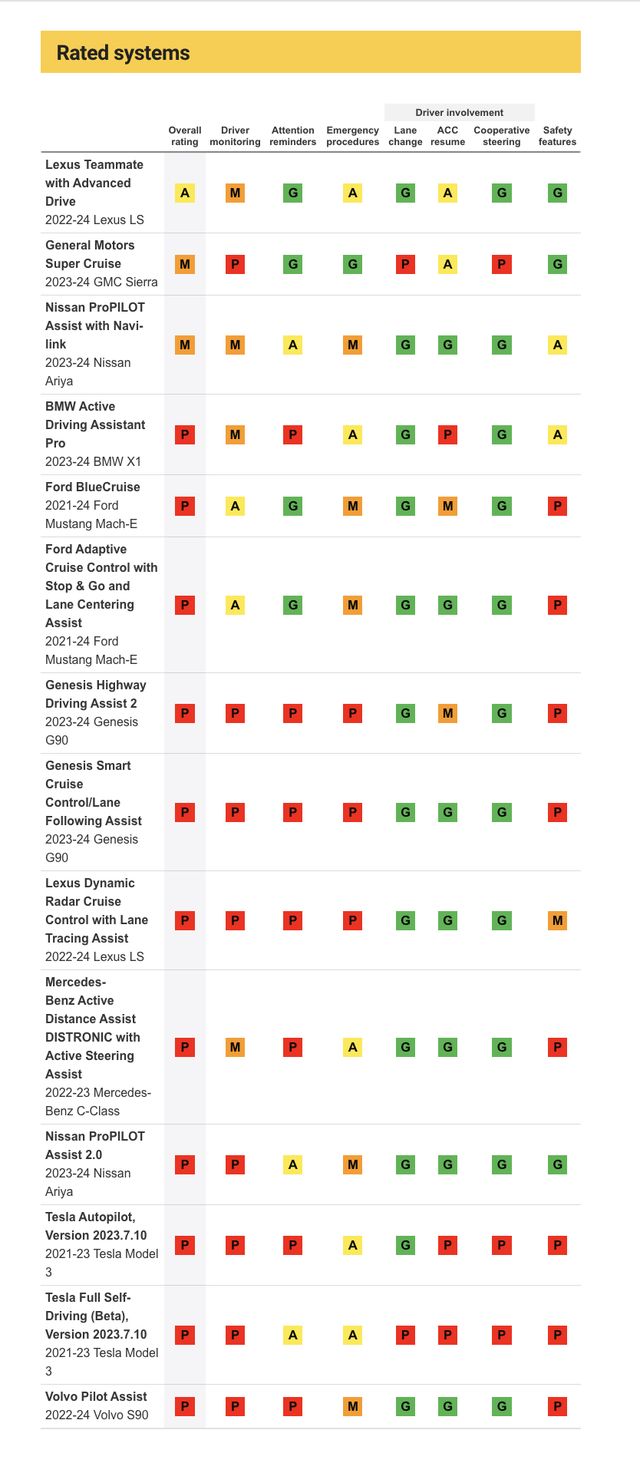Toronto, Ontario — The United States Insurance Institute for Highway Safety (IIHS) recently tested vehicles with semi-autonomous advanced driver assistance systems (ADAS) and found that, out of 14 models tested, only one earned an acceptable rating to pass all IIHS tests.
Specifically, Lexus’s top-of-the-line LS with its teammate system secured an appropriate rating, while the other 13 vehicles assessed offered ‘marginal’ or ‘poor’ performances.
Among those deemed ‘marginal’ were the driver-aid tech powering GMC’s Sierra and Nissan’s newest battery electric vehicle (BEV), the Ariya.
Vehicles that scored lowest on the new safety rating system included Ford’s Mustang Mach-E, the Tesla Model 3, the Genesis G90, the Mercedes-Benz C-Class Sedan and the Volvo S90.

After evaluating the vehicles’ performances, the IIHS says there is thus far “no evidence that these systems have any safety benefits.” Notably, Dave Harkey, IIHS president reported that “while some drivers may feel that partial automation makes long drives easier, there is little evidence it makes driving safer,” and some high-profile crashes have illustrated that current ADAS technology “can introduce new risks when systems lack the appropriate safeguards.”
The reason for this is that, according to the IIHS, while most partial automation systems have some safety features in place to help ensure drivers are focused and ready to take over in an emergency, these initial tests show they are not robust enough.
“The shortcomings vary from system to system,” said IIHS Senior Research Scientist Alexandra Mueller, who led the development of the new rating system. “Many vehicles don’t adequately monitor whether the driver is looking at the road or prepared to take control.”
Mueller said many of the vehicles tested also lacked frequent and forceful attention reminders meant to rouse a driver whose mind is wandering. Many autonomous systems can remain engaged even if occupants aren’t wearing seatbelts.
None of the 14 vehicles tested passed all tests, although Ford’s Blue Cruise and Adaptive Cruise Control with Stop and Go and Lane Centering Assist came close.
Lexus’s Teammate, GM’s Super Cruise and both Ford systems tested provided all of the required alerts when the driver’s eyes weren’t on the road.
Similarly, Nissan’s Pro Pilot systems and Tesla’s Full Self-Driving features performed almost as well, providing initial alerts but not all of the requisite follow-ups. In this case, the seven other systems failed to offer the recommended dual-mode visual and audible alerts within 15 seconds of driver distraction.
Other tests involved ensuring the vehicles didn’t resume driving after coming to a complete stop, and that the lane-centering mechanisms didn’t shut off after the driver exerted manual control. Tests also checked to see if the vehicles were aware when the driver was not wearing a seatbelt and if it was impossible to switch off lane departure prevention once autonomous driving was engaged.
Here, only Nissan’s ProPilot, GM’s Super Cruise and Lexus’ Teammate passed, while Volvo’s Pilot Assist deactivated without an alert when the driver unbuckled their seatbelt.
Overall, the IIHS hopes the new rating system will accomplish, at least shortly, enhanced “safeguards that can help reduce intentional misuse and prolonged inattention.”
Harkey further commented that while the results are worrying, “at least one system performed well in each category. That means the fixes are readily available and, in some cases, may be accomplished with nothing more than a simple software update.”
The post Autonomous Aggravations: IIHS runs autonomous car safety tests; all but one model fail appeared first on Collision Repair Magazine.






















